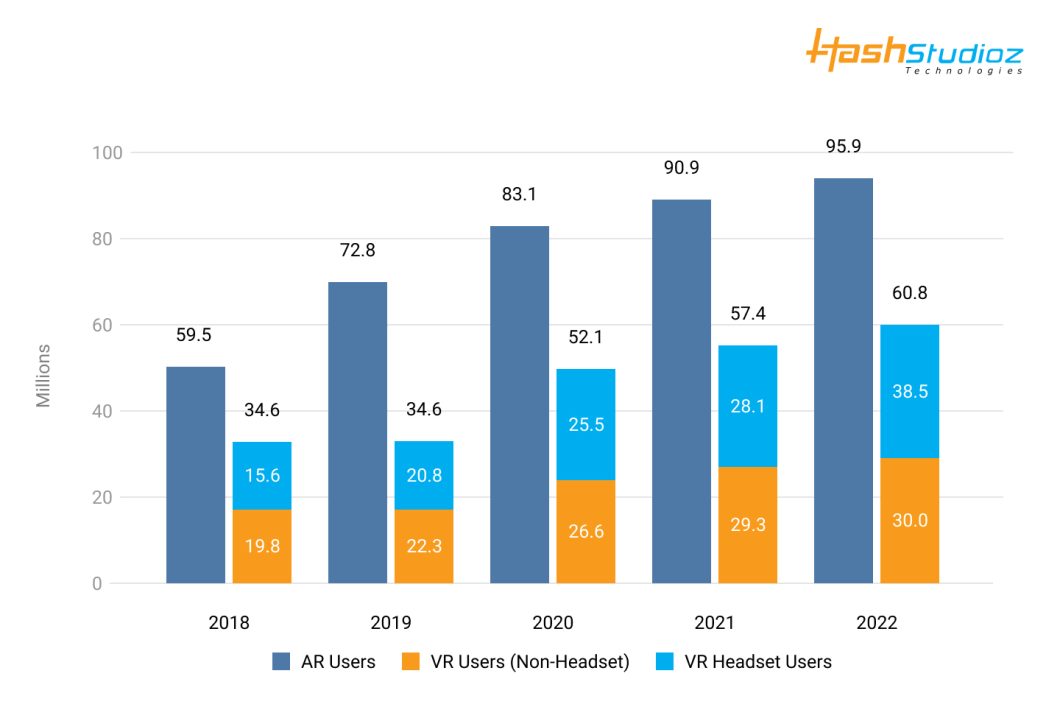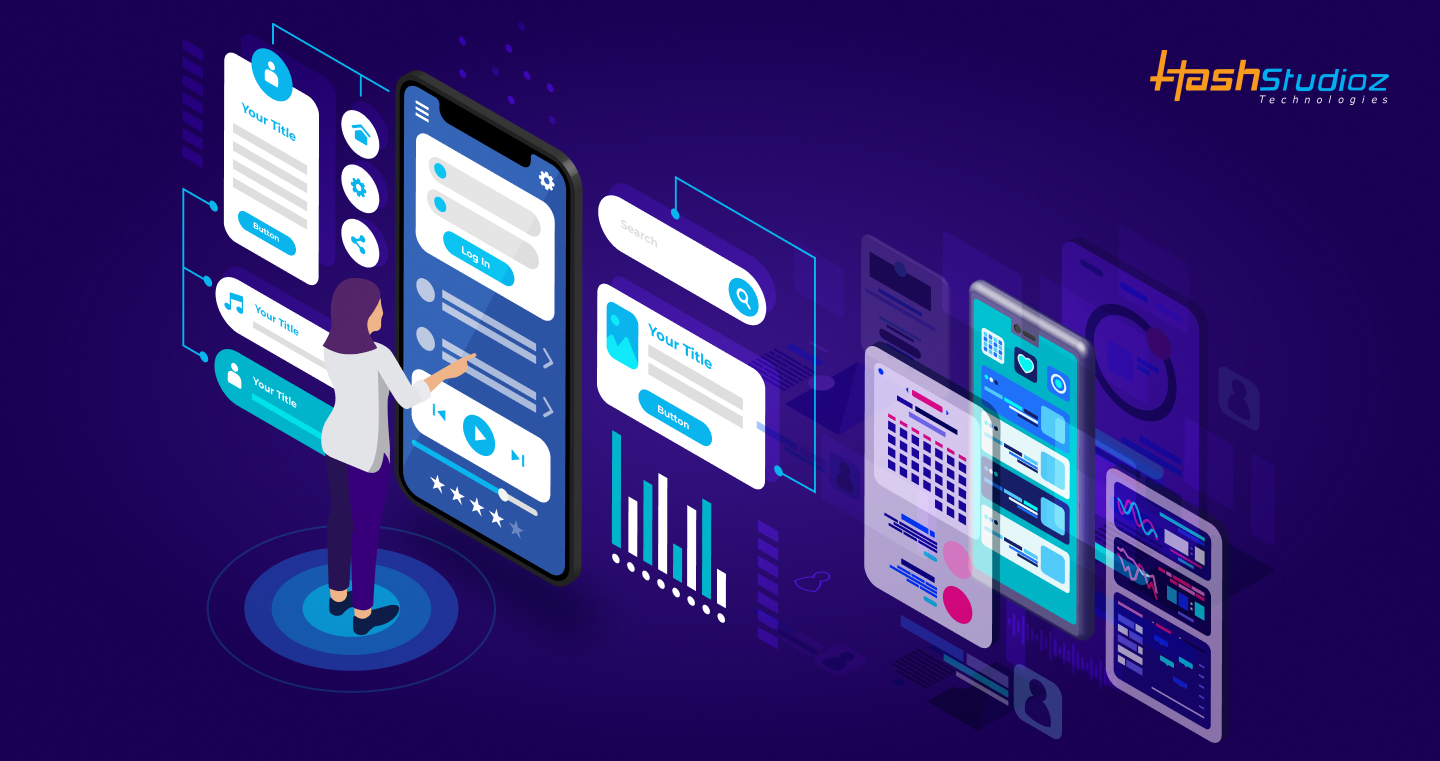Businesses increasingly rely on mobile apps to connect with customers and boost growth. In 2025, mobile apps are central to marketing strategies due to their interactive nature and ability to drive product adoption. With over 7 million apps available on Google Play and Apple’s App Store combined, competition is fierce. Mobile app development is evolving rapidly, with new technologies and user expectations pushing the boundaries. Staying updated on trends like 5G, AI, and AR/VR is crucial to building apps that stand out. Failing to adapt risks losing market share to tech-savvy competitors, making trend awareness essential for app success.
Table of Contents
Mobile app development trends in 2025
This year is certainly full of new trends in mobile app development, but we have compiled a list of the top ones based on extensive, fact-based research.
5G technology
5G technology is revolutionizing mobile app development in 2025 by providing unprecedented speed and low latency. With more than 50% of smartphones globally supporting 5G, apps can now offer real-time experiences previously impossible on 4G. This means faster downloads, seamless video streaming, and smoother gaming experiences. Developers can integrate complex features like augmented reality (AR) and virtual reality (VR) without performance issues.
Additionally, 5G enhances mobile payment security by enabling faster biometric authentication. Ultimately, 5G empowers developers to create feature-rich, efficient, and highly responsive mobile applications that meet modern user demands.
Also Read: How Does 5G Technology Enhance the Internet of Things (IoT)?
Focus on UX/UI
In 2025, the focus on user experience (UX) and user interface (UI) design remains critical. Minimalistic, intuitive designs that fit small mobile screens attract and retain users. Since mobile devices are now used for everything from banking to entertainment, apps must combine aesthetic appeal with easy navigation. A well-crafted UX/UI not only improves customer satisfaction but also increases engagement and retention rates. Incorporating accessible design principles and responsive layouts for different devices, including foldables, is essential. Companies investing in UX/UI improvements gain a competitive edge by delivering smooth, visually pleasing experiences users love.
Apps for foldable devices
Foldable smartphones are rapidly gaining popularity, making it crucial for developers to optimize apps for these devices in 2025. Foldables offer larger, flexible screens that enhance multitasking and media consumption. Mobile apps designed for foldables can provide richer, more immersive experiences with multiple windows and expanded controls. For example, video streaming and gaming apps benefit greatly from additional screen space, allowing users to enjoy more features simultaneously.
However, developing for foldable devices requires careful UI adjustments to maintain usability and responsiveness. Adapting to this trend ensures your app stays relevant as foldable adoption increases.
Augmented reality and virtual reality development
AR and VR are transforming mobile experiences by blending digital content with the real world. In 2025, these technologies continue to expand in gaming, retail, education, and healthcare apps. AR helps users visualize products like furniture or clothing in their environment before purchase, boosting confidence and sales.

VR immerses users in entirely virtual environments, offering new entertainment and training possibilities. The global AR/VR market is projected to surpass $300 billion by 2028, highlighting rapid growth. Developers focusing on AR/VR can deliver engaging, interactive apps that differentiate their brand and meet growing user demand for immersive experiences.
Increasing Popularity of Voice Search
Voice search is becoming a mainstream way for users to interact with mobile apps and devices in 2025. Thanks to smart assistants like Siri, Alexa, and Google Assistant, voice-enabled queries have skyrocketed. It’s estimated that over 8 billion digital voice assistants will be in use by the end of the year. This trend encourages developers to optimize apps for voice commands and voice commerce, improving accessibility and convenience. Implementing structured data, schema markup, and natural language processing enhances app discoverability via voice search. Businesses that adapt to voice search trends will improve user engagement and gain a strong advantage in mobile SEO.
Wearable app integration
The integration of mobile apps with wearable devices is a growing trend in 2025, driven by health tracking, fitness, and lifestyle applications. With millions of smartwatches and fitness bands in use worldwide, developers are creating apps optimized for small wearable screens and sensors. Google’s unified Wear OS and Apple’s WatchOS updates improve performance and user experience, encouraging more app innovation. Wearable apps offer real-time notifications, health insights, and seamless connectivity with smartphones. Businesses embracing wearable integration can deliver personalized digital experiences, improve customer engagement, and open new avenues in health, sports, and productivity markets.
Also Read: Wearable Device Apps: Changing Everyday Life with Smart Technology
Beacon Technology
Beacon technology enables proximity-based marketing by sending targeted notifications to users’ mobile devices via Bluetooth. In 2025, this tech is widely used across retail, healthcare, and events to enhance user engagement and personalize experiences. For example, stores can alert customers about special deals when they walk by certain aisles or track in-store behavior to optimize layouts.

Beacon technology improves the effectiveness of push notifications and enhances customer journeys by providing timely, relevant information. The beacon market is booming, expected to reach $56 billion by 2026. Incorporating beacons into your app strategy can drive higher sales and improve user satisfaction.
A rise in AI-powered interactions
Artificial intelligence (AI) is revolutionizing mobile apps in 2025 by enabling personalized, automated user interactions. AI-powered chatbots provide instant customer support, reducing wait times and operational costs. Additionally, AI enhances recommendations, search results, and predictive analytics, making apps smarter and more user-centric. AI integration helps businesses understand user behavior and tailor content accordingly.
With growing demand for personalization, AI-driven apps increase engagement, loyalty, and conversions. Developers using AI technologies gain a competitive edge by delivering dynamic, adaptive experiences that meet evolving user expectations in real time.
Food & grocery delivery apps
Food and grocery delivery apps continue their strong growth trajectory in 2025. Driven by convenience and changing consumer habits, the market is projected to reach over $350 billion by 2029. Leading players like Uber Eats, DoorDash, and Instacart dominate, but new entrants leverage AI and real-time tracking to enhance customer experience.
These apps focus on speed, safety, and personalized offers to retain users. The increasing shift toward online grocery shopping reflects growing demand for digital convenience. For app developers and businesses, investing in food and grocery delivery solutions represents a lucrative opportunity to capitalize on this expanding market segment.
Artificial intelligence chatbots
AI chatbots are now standard in mobile apps, offering real-time conversational experiences that enhance customer service. These bots handle FAQs, bookings, and support across multiple channels, including social media platforms like Instagram and Facebook. Modern chatbots use natural language processing (NLP) to understand the context and provide personalized responses, improving user satisfaction. Their 24/7 availability reduces response times and operational costs for businesses.
Must Read: Building AI Chatbot for Mental Wellness: How We developed chatbot for Joy and Emotional Health
In 2025, chatbot integration is essential for apps looking to improve engagement, automate routine tasks, and provide seamless customer interactions. As AI continues to evolve, chatbots will become even more sophisticated and integral to mobile apps.
App and Data Security
With rising cyber threats, app and data security is paramount in 2025. Mobile apps handle sensitive personal and financial information, making them prime targets for attacks. Developers must implement robust security measures like multi-factor authentication, encryption, and regular vulnerability testing. Ensuring compliance with data privacy laws like GDPR and CCPA is critical to avoid legal issues and build user trust. Security should be a continuous process from development to deployment, including monitoring and prompt updates. Prioritizing app security protects users and businesses alike, enhancing reputation and preventing costly breaches.
Gaming
Gaming and entertainment apps dominate mobile usage in 2025, with over 160 million active mobile gamers in the US alone. Advanced technologies like AR, VR, and cloud gaming enrich user experiences, offering immersive and social gameplay. Streaming platforms such as Netflix continue to evolve with personalized content and interactive features. Mobile gaming offers easy access, mobility, and stress relief, making it highly popular worldwide. Developers focus on integrating AI-driven gameplay, in-app purchases, and cross-platform functionality. This trend shows no sign of slowing down as entertainment apps become a core part of daily mobile usage and social interaction.
What makes mobile entertainment and gaming apps so popular?
Here’s a concise summary of what makes mobile entertainment and gaming apps so popular based on the content:
- Easy Access: People can enjoy entertainment and games anytime, anywhere on their mobile devices without needing expensive gadgets or laptops.
- Mobility: Users are no longer confined to one place—they can watch movies or play games on the go.
- Technological Advancements: Features like augmented reality (AR), virtual reality (VR), and artificial intelligence (AI) enhance the immersive experience.
- Stress Relief: During challenging times like the pandemic, these apps provided a popular way to escape and distract themselves.
No-code or low-code platforms
No-code and low-code (LCNC) platforms are democratizing mobile app development in 2025. These platforms enable users with minimal technical skills to create functional apps quickly using drag-and-drop tools and pre-built templates. Enterprises benefit by accelerating development cycles and reducing costs. LCNC platforms support customization while maintaining enterprise-grade security and scalability.
As demand grows, the low-code market is projected to reach $187 billion by 2030. This trend empowers citizen developers and accelerates innovation, helping businesses respond faster to market needs and increase digital transformation efforts.
Conclusion
With over 7 million apps in app stores, standing out in 2025 demands knowing and leveraging the latest mobile app development trends. From 5G and AI to foldable devices and security, these trends shape user expectations and app capabilities. Businesses that focus on user-centric designs, advanced technologies, and seamless experiences will lead the market. Stay updated, innovate, and collaborate with expert app developers to turn your ideas into successful, competitive mobile applications.
For expert guidance and development services, trust HashStudioz — a top mobile app development company committed to bringing your app vision to life using the best practices and latest technologies.

